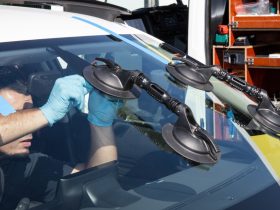
Keeping your gas turbine healthy begins with identifying small issues before they become large failures. As an engaged maintenance engineer, you are constantly working with data and the deck plates—trending, listening for changes, and inspecting components that experience heat, load, and corrosive environments.
What Are Common Failure Indicators?
Often, many issues start with a whisper. Make a habit of surveying the same points the same way on each round to help your eyes (and instruments) to recognize changes over time.
- Increasing vibration trends at certain orders: A trend of increase in vibration at 1× or blade-pass frequency may be a developing condition of looseness, imbalance, or blade damage. Trend by bearing and compare to baseline.
- Exhaust temperature spread (EGT) is increasing: An increase in delta between cans or sectors may be the start of fuel nozzle fouling, hot streaking, or hot-section distress.
- Changes to oil condition: Metallic debris, the color going to the dark side, increase in acid number may prompt further investigation into bearing condition or seal issues. Use in conjunction with filter inspections.
- Changes to performance: Decreased power at the same ambient parameters, increased heat rate, extended startup times may be indicative of air path leaks, compressor fouling, or decreased efficiency in turbine performance.
- Odd sounds or smells: Sounds of scrape, rub, or burnt smells may occur before any damage is measurable—remember where and when they happen.
Visual Inspection vs. Detailed Testing
Look for signs of discolorations, burnt paint, loose hardware, fretting, and missing safety wire. Use an inspection mirror and torque-seal marks to verify that fasteners have not shifted. Where possible, use a well-orchestrated inspection with a borescope allows review of compressor and hot section surfaces without disassembling.
If visible indicators suggest the possibility of larger flaws or if you simply reach the defined hours or cycles, go to nondestructive testing (NDT). Read more on this page. As an example, eddy current tests can be used to identify surface or near-surface cracks in blades, disks, and dovetails. Fluorescent penetrant inspection can show narrow, surface breaking cracks in vanes, casings, and transitions. Ultrasonic thickness testing can discover loss of wall thickness, creep bulging, and delamination in liners and casings. NDT can be applied as appropriate for component material, geometry and anticipated modes of damage, and can be done to steam turbine rotors and diaphragms.
Why Cracks and Corrosion Matter

Cracks and corrosion reduce load carrying area, redistribute stresses, and ultimately lead to earlier failure states in cyclic service. In hot sections, cracks and corrosion can create flow separation leading to increases in local metal temperatures thereby exacerbating damage.
- Thermal-Mechanical fatigue: Heat and cool cycles can create cracks of corners and fillets in blades, vanes, and sealing slots. Particular attention should be paid to trailing edges and root areas.
- High-temperature oxidation and hot corrosion: Foils and base metals can be attacked by sulfur and alkali salts at temperature ranges of 650-950 °C. Look for pitting and matte, greenish spots of corrosion.
- Fretting and dovetail wear: There can be micro-motion that creates notching at blade roots which can be the initiation of source cracks. Ensure post-repair to verify satisfactory seating and patterns of contact.
If you see any of these mechanisms, plan scope early—coating touch-ups, blend limits, or full turbine component repair—so parts can be queued for hot section refurbishment or steam path refurbishment before your next outage window.
Routine Checks That Prevent Downtime
The best approach to keep downtime minimal is to formalize your regular work processes with the same follow-on routines. Keep compressor washes, up to schedule, to maintain airflows and pressure ratio at the compressor. Check inlet and filter ΔP readings, and repairs to any bypass-door leakage. Complete the cycle by updating your limits and alarms so that your plants control system is tuned to notify of trends related to action, at thresholds.
Between outages, give thought to lining up your borescope inspections, with the quality of fuels used, number of starts per day, and history of trends associated with recent alarms. During planned outages, take the time to complete NDT on your highest risk features – blade roots and seal teeth, joints, and transition piece cracks. The relatively small cost to organize process of checks has tremendous returns by reducing forced derate of the overall unit and maintaining the integrity of the rotor from cascading damage.
How to Document Inspection Findings
Good inspection documentation can transform one inspection report into a longitudinal reference. Take clear photos from borescope inspection, with a general photo of the components to reference. Clearly tag all findings by unit, component, stage, clock position, and axial distance. Assign a severity rating, such as (low, medium, high), will a recommended course of action to simply monitor, blend, coat or replace, with a timeline for expectation. Provide a backdrop of operating context (hours, starts, fuels, recent trip), for engineers to associate damage with operational duty rounds. Store documentation in a way that can be reviewed for evidence of trends across outages, but also aligned to acceptance criteria.











